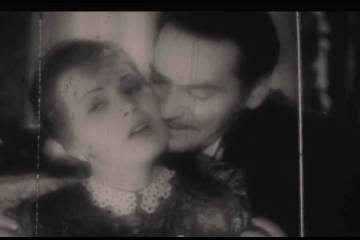James Cameron’s Avatar, launched in 2009, immediately stood out due to its revolutionary visual components. Although numerous movies have utilized cutting-edge technologies to improve narrative, Avatar captures interest with its intricate visual communication. Every aspect, from the color schemes to the aesthetic decisions, is meticulously arranged to move audiences from earthly existence to the stunning moon of Pandora. This analysis examines the particular visual characteristics that establish Avatar as a lasting filmic marvel.
Groundbreaking Application of {{3D}} Technology
The most widely recognized visual advancement in Avatar is arguably its groundbreaking use of stereoscopic 3D. Far from being a simple novelty, this 3D technology is intrinsically linked to the narrative itself. The unparalleled depth of perception draws viewers into each moment, whether they are flying through Pandora’s atmosphere on a banshee or exploring its glowing forests. The precise three-dimensional arrangement enhances both spatial understanding and emotional connection. Information from the movie’s creation indicates that, over a period of four years, specialized cameras and software were created specifically for this endeavor, highlighting how crucial visual immersion was to the film’s core essence.
Masterful World Creation: Pandora’s {{Flora}} and {{Fauna}}
Avatar extensively uses environmental narrative, with Pandora acting as a vibrant, sentient entity. The moon’s landscape—featuring a mix of levitating peaks, dense jungles, and luminous plant life—is inspired by actual botanical and zoological principles, yet enhanced by creative design. Every plant, including the colossal Hometree and the conscious Woodsprites, is intricately depicted with vivid hues and fluid animation. The hidden tree canopies and elaborate ground cover add levels of visual intricacy, a result of botanists, designers, and digital artists working together. Indigenous animals—such as the Direhorse and the Banshee—generate a sense of both recognition and extraterrestrial marvel by fusing terrestrial anatomy with unique characteristics, solidifying Pandora’s alien biological system.
Bioluminescence and the Spectrum of Illumination
One of the film’s most iconic visual identifiers is its extensive use of bioluminescence. Dayscapes in Pandora are marked by dense, oversaturated greens and blues, but by night, the world transforms. The forests pulse with radiant purples, pinks, blues, and greens, achieved through advanced rendering techniques and an acute understanding of color theory. These bioluminescent effects are not simply decorative; they contribute to the Na’vi culture, guiding rituals and signifying spirituality. For instance, the Tree of Souls not only visually dominates but also encapsulates thematic resonance—serving as both a visual spectacle and a narrative locus.
Figure Creation and Movement Recording
The Na’vi stand as a monumental accomplishment in the realm of digital character design. Their extended limbs, cat-like characteristics, and glowing skin designs are immediately unforgettable. These attributes go beyond simple cosmetics; advanced motion-capture techniques enable the performers’ emotional subtleties to be accurately transferred to their digital representations. The breakthrough in facial capture is vital—slight expressions, eye movements, and physical gestures communicate genuineness, thereby reducing the well-known ‘uncanny valley’ phenomenon. Underlying this flawless execution is a massive logistical undertaking: over 60% of the movie consists of computer-generated figures engaging interactively with both virtual and live-action components.
Costume and Cultural Signifiers
Visual detailing extends deeply into costume design for both the Na’vi and human characters. The Na’vi’s attire features woven textiles, natural leathers, feathers, and bioluminescent beads, each reflecting their spiritual connection to the land. This echoes real-world indigenous cultures while blending imaginative fantasy elements, providing a visual shorthand for cultural depth. Human characters—specifically the soldiers and scientists—are defined by utilitarian exosuits, lab wear, and mechanized armor, underscoring the thematic conflict between nature and technology and illustrating the difference between human and Na’vi worldviews visually.
Environmental Composition and Cinematic Framing
The visual storytelling in Avatar carefully portrays Pandora’s magnificence using expansive establishing shots and detailed close-ups. Broad-view panoramas showcase the breathtaking elevation of the Hallelujah Mountains, utilizing their sheer size to evoke both wonder and a feeling of smallness. Cameron utilizes fluid camera work to mimic flight and compose action scenes, generating a vibrant energy that immerses viewers in the environment. Significant moments employ illumination and darkness, highlighting the contrast between Na’vi tranquility and the stark, unfeeling human settlements, offering a visual narrative that reinforces central messages.
Integration of Practical and Digital Effects
The blend of practical and digital effects assures that Pandora’s environment feels tactile rather than entirely synthetic. Real sets are merged with computer-generated extensions, allowing live actors to interact credibly with their surroundings. This hybrid approach is visible in close-ups of forest floors, where actors’ hands brush digital foliage that responds in real-time, rooting the visual fantasy in physical reality.
Influence on Other Media and Popular Culture
The unique visual identity established by Avatar has influenced games, theme park attractions, and subsequent films. For example, the immersive lands in major amusement parks recreate Pandora’s glowing vistas, demonstrating the film’s lasting visual impact. Other filmmakers have cited Avatar as a reference point for integrating CG with live action at scale, using it as a benchmark for technical ambition and visual storytelling.
An Enduring Visual Heritage
Every visual decision in Avatar combines advanced technology and creative world-building to deliver a deeply immersive experience. The movie’s unified color scheme, detailed character designs, and novel lighting techniques are meticulously arranged, pulling audiences further into its environmental narrative. With these components, Avatar has not only influenced the progression of visual effects but also reset standards for cinematic engagement, showcasing the lasting impact of artistic skill blended with technological innovation.




